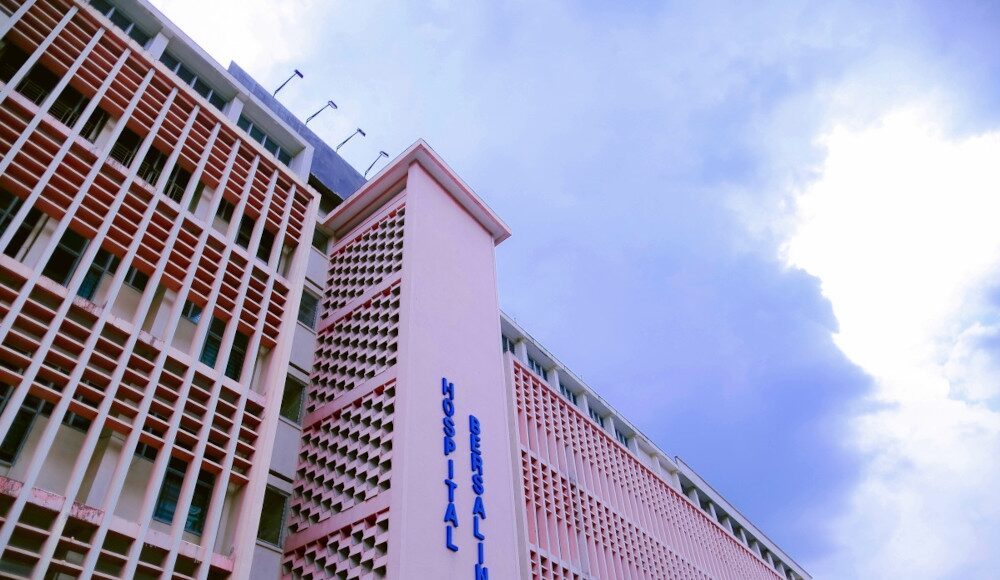MAY 9 — As Mother’s Day 2025 approaches, we find ourselves drawn once more to the quiet, unyielding strength of a mother’s love. It is a day to honour the women who have carried, nurtured, and shaped us — and to remember the spaces where these stories of life first begin: our nation’s maternity hospitals.
These are not just buildings. They are places where joy and pain meet, where futures are quietly set in motion, and where a mother’s resilience leaves its first invisible mark on the world. Among these, Kuala Lumpur Maternity Hospital — or as many fondly remember it, Hospital Bersalin Kuala Lumpur — holds a special place in Malaysia’s collective memory.
The story of this maternity hospital began with the hopes of a newly independent nation. Tunku Abdul Rahman Putra Al-Haj, Malaysia’s first prime minister, was deeply concerned about the wellbeing of mothers and their newborns. In a post-independence capital experiencing rapid growth, maternal healthcare was limited and basic.
Recognising this need, Tunku envisioned a modern, dedicated maternity facility. On May 12, 1961 — a date that fittingly coincided with the global celebration of mothers — he officiated the construction of the Kuala Lumpur Maternity Hospital. It was a decisive step, not just for healthcare, but as a symbol of the young nation’s commitment to its people.
Kuala Lumpur Maternity Hospital — fondly known as Hospital Bersalin Kuala Lumpur — holds a special place in Malaysia’s memory as a site of countless beginnings.
The hospital’s design was entrusted to K.C. Duncan, a senior architect from the Public Works Department (JKR). Inspired by Le Corbusier’s modernist principles, Duncan created a building that responded intelligently to Malaysia’s tropical climate. Ventilation blocks allowed fresh air to circulate through non-air-conditioned wards and corridors, long before air-conditioning was standard. Its clean lines, honest materials, and human-focused spaces marked a new chapter in healthcare design — one centred on functionality, dignity, and wellbeing.
But beyond architectural achievements, Kuala Lumpur Maternity Hospital became something greater — a sanctuary of beginnings. For decades, its delivery rooms echoed with the cries of newborns, marking the start of countless Malaysian stories. Mothers from all walks of life — royalty and labourers, homemakers and professionals — passed through its doors, each carrying a silent hope for the future.
For some, it was the place where they delivered more than one child, each a fresh chapter of sacrifice and devotion. For others, it was the first place they cradled a tiny heartbeat against their own, exhaustion mingling with awe. Every cry, every heartbeat heard within those walls is a living reminder of life’s miraculous, everyday beginnings.
Today, while newer facilities have risen across the country, this hospital — along with others in Penang, Johor, Sarawak and beyond — continues to evolve. Maternity care has expanded to include not just safe delivery, but postnatal counselling, breastfeeding support, and mental health services. It reflects a growing recognition that caring for a mother extends beyond birth, embracing the full, complex journey of becoming one.
Motherhood, in every culture and time, is a quiet kind of heroism. It is forged in sleepless nights, carried through unspoken fears, and sustained by the enduring strength to give, even when depleted. It’s a universal story written in different languages but felt in the same aching, joyous corners of the heart.
As mothers ourselves, we understand this intimately. We have known the weight of responsibility, the anxious prayers during labour, the indescribable relief at a baby’s first cry. Regardless of where one is born — in a humble kampung home, a public ward, or a private suite — the pain of delivery humbles, and the moment of birth transforms it into something eternal.
That moment connects us not only to our children but to every mother before and after us. It reminds us that every life begins with a woman’s courage and that this resilience, though often unseen, is the invisible scaffold of a nation.
On this Mother’s Day, as we celebrate the women who raised us, let us also honour the spaces that silently cradle our futures. Maternity hospitals like Kuala Lumpur’s are more than functional institutions; they are living archives of stories, struggles, and beginnings. Their walls have borne witness to the first moments of countless Malaysian lives and deserve a place not only in our healthcare history but in our cultural memory.
As architects and mothers, we believe it is important to preserve these places, not only for their physical heritage but for the intangible legacy of care and resilience they represent. In a rapidly modernising city, these spaces remind us of who we are, and where every journey begins.
This Mother’s Day, under the theme “Every Birth is a Miracle, Every Mother is a Hero”, we salute not just mothers, but also the midwives, doctors, nurses, and support staff who stood quietly beside them. We pay tribute to professionals and visionaries like Tunku Abdul Rahman who placed maternal care at the heart of national development.
And in the end, as we reflect on our own mothers — those who endured pain and uncertainty to bring us into the world — let us remember the words of Prophet Muhammad (peace be upon him): “Paradise lies at the feet of your mother.” Their sacrifice is priceless, their love foundational.
To every mother, by whatever name you are called — mak, ibu, mama, bonda, umi, maa, amma, mum or mummy — thank you. We love you. Always.
* Sr Dr Zuraini Md Ali is an Associate Professor at the Building Surveying Department, Faculty of Built Environment, Universiti Malaya, and a proud mother of seven. Dr Nor Hayati Hussain is an Assistant Professor at the School of Architecture, Faculty of Built Environment, Tunku Abdul Rahman University of Management and Technology, and a proud mother of six.
** This is the personal opinion of the writer or publication and does not necessarily represent the views of Malay Mail.





